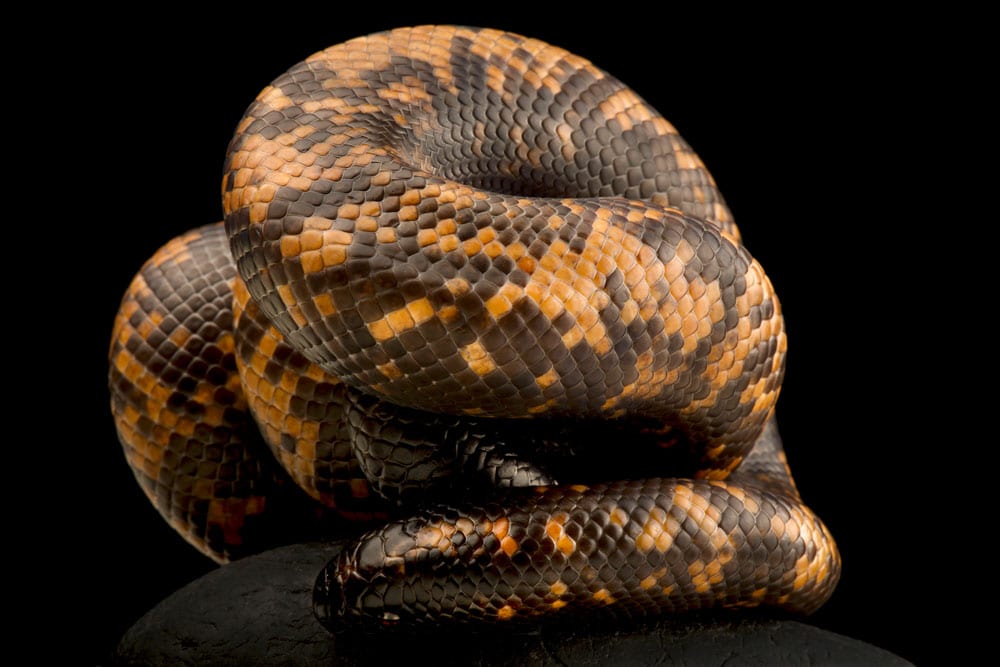The small python feeds on baby rodents and its skin may have evolved to resist bites from angry mothers.
The Calabar burrowing python (Calabaria reinhardtii) has the thickest and hardest skin of any snake species, according to a study published in the Journal of Morphology.
Researchers measured the thickness and hardness of the python’s skin to that of 13 other species of snake by determining the thickness of the skin using a microscope and assessing the skin’s puncture resistance with hypodermic needles and a force transducer. It was found that the Calabar burrowing python’s skin was 15 times thicker and much much harder than any other snake it was tested against. It also sported specialized hinges between the scales that are thought to help the snake’s flexibility. The hinges of the Calabar are smaller than other species, which the scientists speculate results in the skin being resistant to punctures.
Want To Learn More?
Herping Misadventures in Cameroon
The snake is interesting in that its head looks exactly like its tail, which researchers believe is a defense mechanism against predators. When threatened, the snake hides its head under its body and moves its tail in such a way to distract from its head. The snake is a burrower, hunting in rodent burrows and consuming all baby rodents in the burrow.
The full research paper can be read on the Journal of Morphology website.



